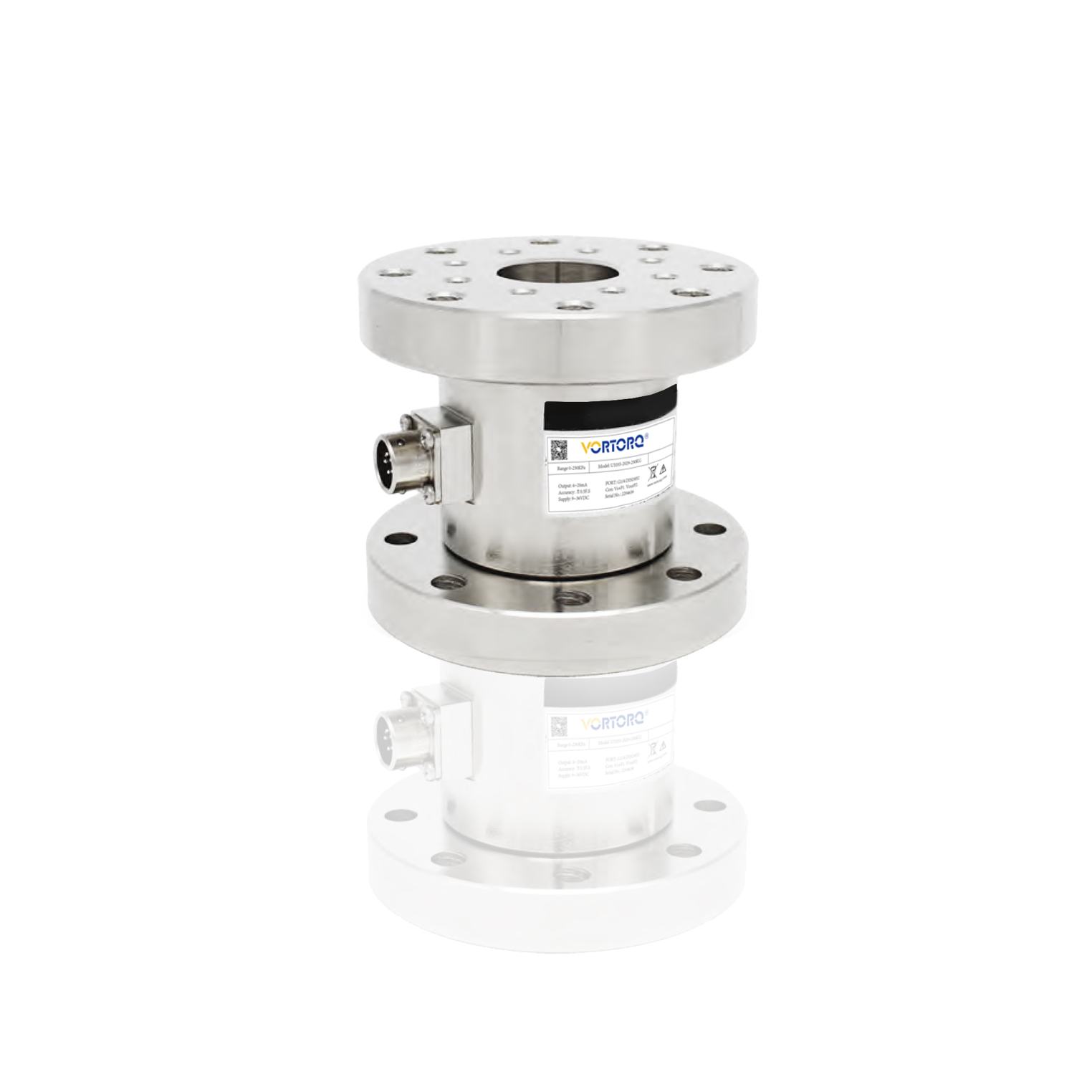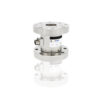Compact structure, easy to install, protection grade: IP65, used for torque measurement of static and noncontinuous rotation. Application: It is widely used in static torque testing systems of testing machines, torque wrenches, steering machines, electric actuators, valves, and transmissions. Features: The torque sensor WDDA-301 is designed with a double flange structure, and the flanges at both ends can be installed between the shaft or flanges for torque measurement.
The torque measuring sensor WDDA-301 is based on the principle of resistance strain gauge. The resistance strain gauge is installed on the specially processed elastomer, and then the mechanical torque signal is converted into an analog voltage signal, which is proportional to the torque value within the error range.
The range of flange-type torque sensor WDDA-301 is very wide, ranging from 0-200Nm to 0-100kNm. Common applications include torque calibration of torque wrench, fatigue test, motor torque measurement, actuator torque measurement, torque test bench, college torque experiment, etc. VORTORQ can customize the torque sensor to meet the different requirements of customers.







Reviews
There are no reviews yet.